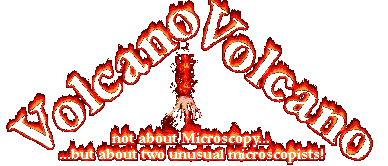
Volcano
The Facts!
by Larry Legg and Vanessa Summers
Christmas 1998

Volcano The Facts! by Larry Legg and Vanessa Summers Christmas 1998 |
| VOLCANOES
- and our planet.
If you are looking for a better understanding of volcanoes you need to have some knowledge about the way the earth is changing, a short but interesting geology lesson follows. The earth is a planet orbiting the sun, a medium star in the Orion arm of the Milkyway galaxy. The sun has since provided a remarkably steady output. Around 4500 million years ago earth formed its core, mantel and crust. The Inner Core is Nickel and Iron believed to be solid due to pressure but the Outer Core is believed to be Liquid. The Mantel is rock high in silica and Magnesium this is believed to be semi plastic. It has convection currents produced by heat of radioactive decay. The Crust is solid rock but is very thin compared with the size of the whole earth. It may be divided into two types: Continental and Oceanic. Both of these crusts float on the mantel. The two types of crust consist of different types of rock the continental is on average granite and around 70Km thick the Oceanic crust is Basaltic around 6Km thick and no part is no older than 200 million years. The crust is not a continuous skin but is made up from separate pieces called Plates. Each plate moves
about the surface at the rate of a few centimetres per year.
VOLCANOES - types. There are two main types of volcano: Shield or Cone. When the magma reaches the surface, it has changed in composition and is now larva. The Shield type have fast larva flows which on the whole are not dangerous, for example the worlds largest volcano - MAUNA LOA in the Hawaiian islands ( it is not on a subducting plate but on a hot spot , which is another story). The core rises from the seabed 10Km and has a spread that would cover Wales. Composite Cone types have slow moving viscous larva that piles up in layers creating a high altitude cone. This often forms a 'plug' of rock between eruptions this causes internal pressure to build up with new activity and the volcano clears its throat in a spectacular way, the plug is blasted out of cone. The result is a jet of volcanic gas at 700 deg C containing larva droplets and shattered vent rock travelling at 500Km/H. This was known as Nuees Ardentes (Glowing Cloud )or pyrocaustic flow. A classic example of this type of action happened on the Caribbean island of Martinique in 1902. The volcano had been rumbling for a month so quite understandably - the local people of St Pierre wanted to leave. All the local wildlife had gone including a boa constrictor, which had escaped from the botanical gardens. The mayor issued a notice that said that evacuation was unnecessary as the larva would not reach the town. At 8.01am on May 8th there was an enormous explosion the town was hit by the Nuee Ardentes within a few minutes there were 28,000 dead only 70 survived. Witnesses described a violet-Red cloud hitting the town. It is now believed that this type of eruption was responsible for destroying the ancient town of Pompeii in Italy. The Mediterranean volcanoes are the result of the African plate and the Adriatic plate subducting below the Europe plate east of Sicily. But there is always
one that the breaks the rules! Mount ETNA
appears to rise from deep secondary cracks in the crust caused by the impact
of the two major plates.
The eruption of 1669 demonstrated how violent this volcano could be, these events led to the birth of the Monti Rossi cone revealing a fissure 12Km long in its side, flowing with lava. Within three days, larva had covered six villages and was flowing at a rate of 328ft an hour. The flow was strong enough to push away fields of vines and was heading for the city of Catania. Most Catanians thought the city was lost but a priest called Diego Pappalardo decided to try to change the direction of the flow. He chose 50 men and took them up to the solidified sidewall of a flow that was thin enough to be opened with iron bars, they broke through causing the lava to leave its old course and flow sideways. He the directed men to close the old way with rocks. The new route the lava took was towards a neighbouring village, whose inhabitants came and threatened the men with instant death. The lava, left to its own devices, reassumed its flow toward Catania (interfering with the lavas natural course was banned until 1983). The panic- stricken Catanians turned to their protecting patron, Saint Agatha, whose veil was placed in front of the advancing flow in vain. The eruptions which had started in April mostly went around the city and the final burst came on June 26 when the flow rushed into the sea. The Catanians were amazed and thanked their lucky stars and St Agatha that most were saved. The eruptions stopped on 11 July 1669. The lava covered 14 square miles and destroyed 12 villages but nobody was killed. In 1983 lava flow solidified walls were blown apart by explosives and bulldozers used to divert the flow away from seven villages. In 1992 Helicopters dropped concrete blocks to change the flow but more measures needed to be taken. A new purpose built channel was built and the flow diverted into it using explosives. This flow stopped in 1993. Volcanic regions
are rich in minerals, with many interesting rocks derived from the larva
types. Would you like to see a small selection
of these now?
|
||
|
||